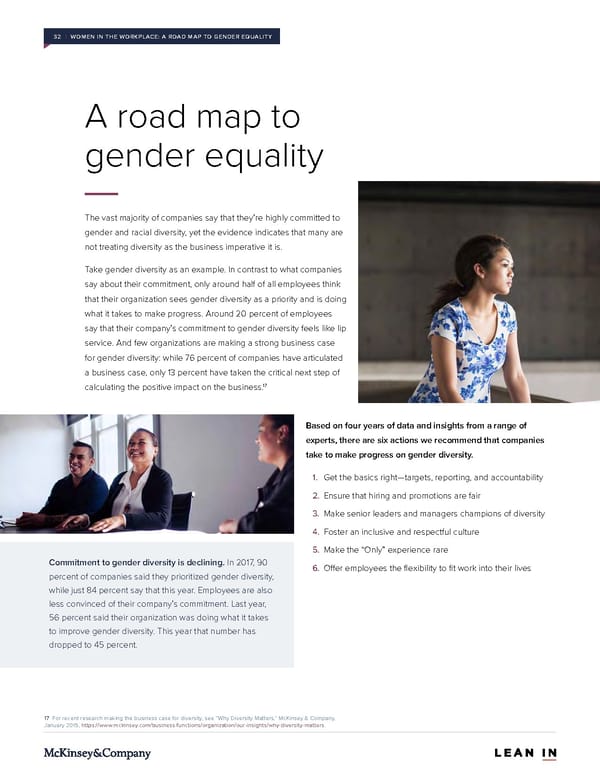32 | WOMEN IN THE WORKPLACE: A ROAD MAP TO GENDER EQUALITY A road map to gender equality The vast majority of companies say that they’re highly committed to gender and racial diversity, yet the evidence indicates that many are not treating diversity as the business imperative it is. Take gender diversity as an example. In contrast to what companies say about their commitment, only around half of all employees think that their organization sees gender diversity as a priority and is doing what it takes to make progress. Around 20 percent of employees say that their company’s commitment to gender diversity feels like lip service. And few organizations are making a strong business case for gender diversity: while 76 percent of companies have articulated a business case, only 13 percent have taken the critical next step of 17 calculating the positive impact on the business. Based on four years of data and insights from a range of experts, there are six actions we recommend that companies take to make progress on gender diversity. 1. Get the basics right—targets, reporting, and accountability 2. Ensure that hiring and promotions are fair 3. Make senior leaders and managers champions of diversity 4. Foster an inclusive and respectful culture 5. Make the “Only” experience rare Commitment to gender diversity is declining. In 2017, 90 6. Offer employees the flexibility to fit work into their lives percent of companies said they prioritized gender diversity, while just 84 percent say that this year. Employees are also less convinced of their company’s commitment. Last year, 56 percent said their organization was doing what it takes to improve gender diversity. This year that number has dropped to 45 percent. 17 For recent research making the business case for diversity, see “Why Diversity Matters,” McKinsey & Company, January 2015, https://www.mckinsey.com/business-functions/organization/our-insights/why-diversity-matters.
 Women in the Workplace Page 38 Page 40
Women in the Workplace Page 38 Page 40